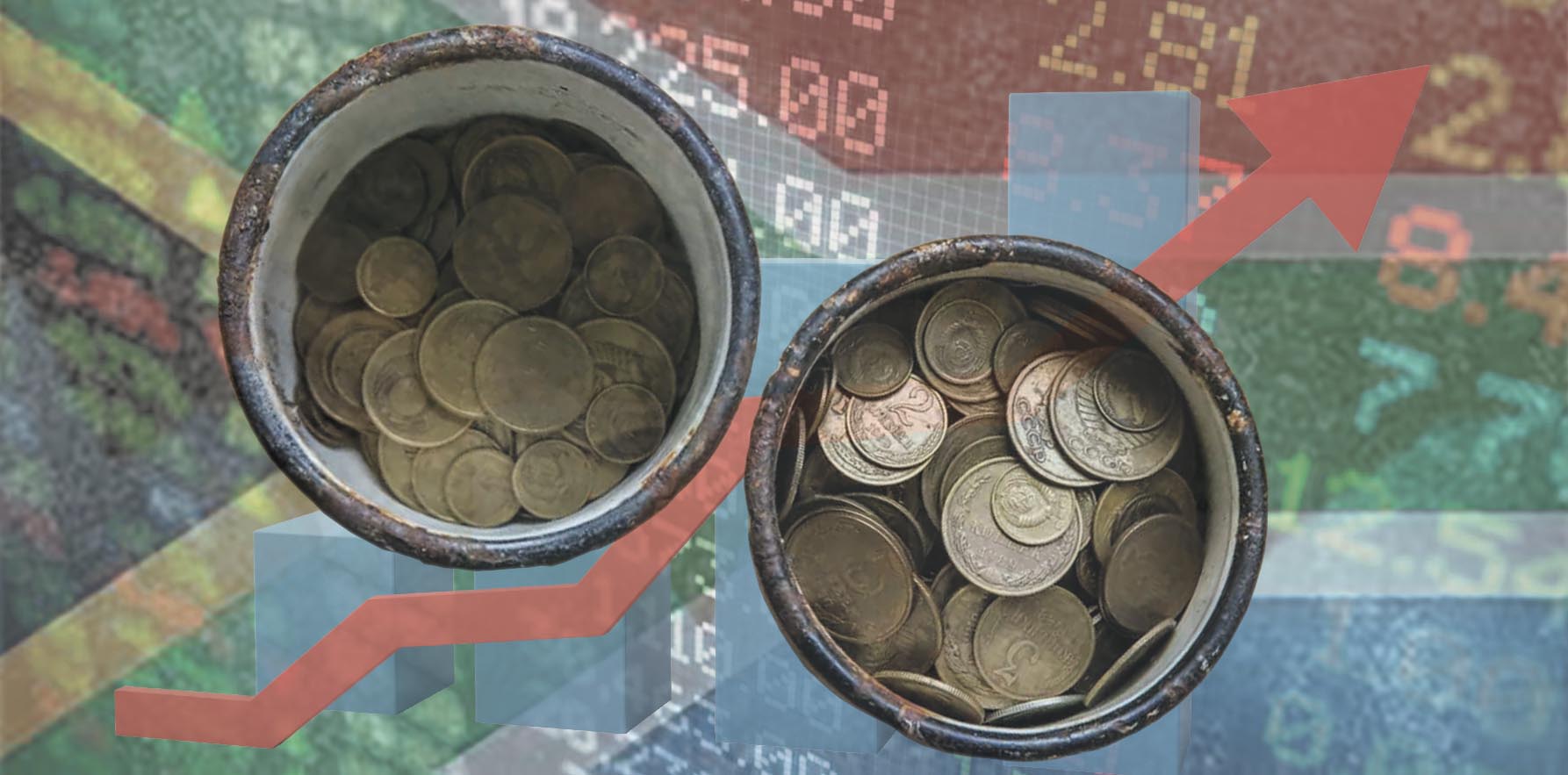South Africa’s economy barely grew in the first six months of this year, expanding 0.4% in the second quarter after flatlining in Q1. But there is reason for optimism as springtime blooms.
Stimulus seeds are being planted alongside structural reforms and this could blossom into faster rates of growth, at least in the short term. To become sustainable, this will need to be carefully nurtured as some of the same seeds could produce a harvest of sorrow in the longer term.
One big stimulus crop currently being sown is the fiscal boost from the “two-pot” reforms allowing for early withdrawals from pension savings.
The South African Reserve Bank estimates in a recent paper that the consumption linked to this liquidity shot could boost economic growth over the next two years by 0.1 to 0.7 percentage points, depending on the withdrawal rates.
Under a “moderate withdrawal” scenario, the government debt-to-gross domestic product (GDP) ratio would be reduced by 0.5 percentage points in the 2024/25 financial year and by 1.0 percentage point in the following year.
Read more: Two-pot withdrawals to add R6.7m to fiscus after just one day
This estimate improves under a “high withdrawal” scenario to 1.1 percentage points and 2.3 percentage points over the next two financial years.
There are many variables at play here, including how much is used to pay down existing debt and how much is directed to consumption.
And while the economy could get a short-term “high” from this liquidity rush, withdrawal symptoms could kick in later. The Reserve Bank has also warned that “the higher the withdrawal rates, the less funds will be available at retirement age”.
Under the high-withdrawal scenario, the Reserve Bank sees a curtailment of “the positive effects that the higher GDP will have on fixed investment”.
“As fund managers are forced to liquidate assets, thereby decreasing the pool of funds available for investments, growth in private sector fixed capital formation is expected to decline marginally by 0.2 percentage points in both 2024 and 2025, before increasing by 0.1 percentage point in 2026 as the benefits of the new system start to positively affect this sector.”
Gross fixed capital formation is effectively a broad measurement of investment and as of Q2 this year it has been in decline for four consecutive quarters.
South Africa’s savings rate is woeful, with only 6% of economically active people in a position to retire in comfort. This is why South Africa’s economy requires foreign investment.
And faster rates of growth in the longer run are not possible without higher investment levels.
Monetary boost
The other boost in the offing is the prospect of lower interest rates. The US Federal Reserve is widely expected to start cutting rates on 18 September, and that will support the case for the Reserve Bank to do the same the following day when its Monetary Policy Committee concludes its next meeting.
The Reserve Bank’s key lending rate is currently 8.25% and the prime lending rate for consumers stands at 11.75%. The bank has held rates steady at these levels since May last year in a bid to contain inflation, which in July slowed to 4.6%, the middle of its 3% to 6% target range.
Lower domestic interest rates will ease the debt burden on companies and households and, depending on the scale of the cuts – the Monetary Policy Committee could lower rates again in November and early next year – the upshot could be that more of the flows unleashed from the two-pot system could be directed to consumption rather than debt reduction.
A US rate cut could help stoke demand for South African goods and commodities such as platinum group metals (PGM), which have seen prices crash from the peaks scaled a couple of years ago. The industry threw the Treasury a lifeline in 2021 and 2022 when record profits translated into record taxes paid.
“Our view is that PGM prices are not driven only by market fundamentals but by global economic sentiment,” Impala Platinum CEO Nico Muller said.
“I believe that if you see a reduction in [US] interest rates… it will create improved sentiment and incentivise buying behaviour from our key customers. I personally believe there will be support for PGM price increases when that happens.”
Structural seeds
For these fiscal and monetary boosts to the economy to be sustained and lead to higher levels of growth, structural reforms are urgently required.
One light at the end of this tunnel has been the suspension since late March of the nationwide rolling power cuts, a state of affairs driven by the private sector’s embrace of renewables and Eskom’s improved performance.
This has not generated significantly higher rates of growth yet, but gross capital formation has been in decline in part because of a lack of confidence in power supplies. If the end of rolling blackouts becomes permanent, then confidence and investment should get a lift.
State-run logistics company Transnet remains unprofitable, but there are promising signs that its performance is improving in collaboration with the private sector. And political support under the government of national unity for such private/public cooperation looks solid.
For now, the fiscal and monetary boosts will be welcome – but sustained rates of higher growth will require that the improvements in power supplies are mirrored in logistics and other crucial spaces. DM
This story first appeared in our weekly Daily Maverick 168 newspaper, which is available countrywide for R35.






